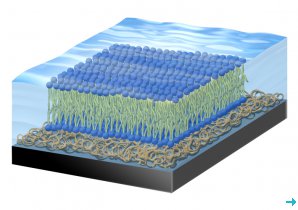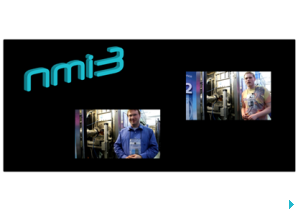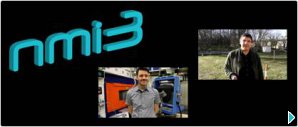Tasks and partners
A platform for model biological membranes
Task 1. A platform for model biological membranes for structural and dynamical characterisations
ILL (task leader)- STFC, CEA (partners) – HZB, TUM, JÜLICH (observers)
Natural biological membranes are highly complex systems, composed of different lipids, proteins, sterols, etc. As a result of this complexity, native membranes are difficult to study and simpler models need to be devised for structural characterization in the fraction of nanometer scale.
ILL has pioneered the floating bilayer system, which provides biologists with bio-inspired model membranes (MM) to use for the study of interactions with a plethora of bio-molecules. This and other models developed in various neutron facilities, suffer from a number of drawbacks and are not always suitable to mimic the complexity of real membranes. A very topical issue in this field is also the development of reliable protocols for reconstitution of membrane proteins into model membranes.
With these aims, different approaches will be studied to produce reproducible and realistic model membranes for biophysical and biological studies. In addition, there is a need for improved data analysis methods to extract as much information as possible from reflectivity data. The second aspect of the work will be in the development of novel modelling methodology, including molecular scale information from molecular dynamics simulations in the interpretation of NR data.
Additionally, the deuteration of lipid compounds is essential for such studies but their chemical synthesis is challenging (due to the presence of double bonds in most of lipids). We thus propose to extract natural lipids from the biomass produced from protein deuteration at the D-Lab facility in Grenoble, so that deuterated lipids not available in the commerce can be provided to the neutron scattering users of European facilities.
Soft materials specific sample environments and in-situ devices
Task 2. Kinetic/dynamic measurements in periodic external fields
JÜLICH (task leader)- ILL, CEA (partners)- STFC, HZB, TUM, Tübingen Univ. (Germany) (observers).
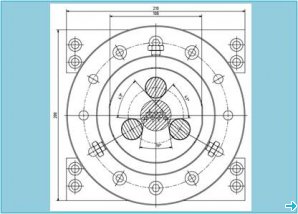
Read our article on a new pressure cell that will broaden the research possibilities in several scientific fields.
Soft materials are very sensitive to various stimuli (mechanical deformation, electric or magnetic fields, UV or visible irradiation, pH, concentration or temperature variations)… Many of these external fields have been applied mostly statically, and we need now to study responses of the sample to periodic time dependent fields. We wish to extend the accessible fields, and develop kinetics and in situ measurements in neutron scattering.
Stopped Flow (SF) devices are used to record real time measurements (including very early stages of 100ms) on a sample after application of an external stimulus. A first crucial step to improve both performances and spread kinetics studies with SF equipment could be overcome by improving the filling and emptying of the sample cell and adapting the cell volume and geometry to the amount of “available” samples. Another important development of these devices concerns a more precise control of temperature in order to follow phase transitions after T-jumps.
Investigation of the wide scale range intermediate states of structures displayed by soft materials is another major challenge for all future technical developments. A combined static LS / SANS setup would complement the standard SANS Q-range to smaller Q range (2 10-4 Å-1 ≤ Q ≤ 3 10-3 Å-1) and would allow accurate monitoring of aggregation phenomena, approach to a phase separation etc. Until now, a combination of SANS and dynamic light scattering has been only achieved for a fixed light scattering angle, and static light scattering has never been used before in combination with SANS. We first propose to design such set-up.
External stimuli like UV irradiation can induce chemical reactions, and/or conformational and/or structural changes in soft materials. Application of oscillating electric field is one of them and is scarcely developed since electrolysis often occurs. We aim at developing electric field cell with electrodes outside the sample. Thermalization of the cell has to be provided.
So far, only few high resolution neutron scattering experiments addressed the dynamics of soft matter involving pressure. In the pressure region of several kbar interesting questions can be addressed: e.g. proteins undergo a transition from the folded to the unfolded state not only by an increase of temperature but also at high pressure as shown by SANS measurements. NSE spectroscopy has a great potential in the study of internal dynamics of unfolded proteins, but its large beam cross section and its requirements of non-magnetic materials are challenging for high pressure devices. We propose to develop a non-magnetic pressure cell accepting a large incoming beam cross section and large exit angles.
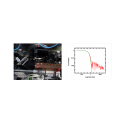
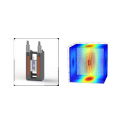
Task 3. Humidity chamber
HZB (task leader)- ILL, JÜLICH (partners)- STFC, TUM, CEA, McMaster Univ. (Canada) (observers)
In-situ control of the hydration level of soft materials samples plays a crucial role in the investigations of a number of systems like for example the proton motion in Nafion membrane, the dynamics of phospholipid membranes, the structure and dynamics of clays, as well as in the study of the function/structure relationship of proteins.
Over the past few years, ILL and HZB have been developing humidity chambers for neutron scattering using different techniques to control both relative humidity and temperature. But further developments are needed to obtain a faster and better controlled response in wider temperature and humidity ranges. Different geometries of humidity chambers with different specifications will be produced to adapt to SANS, reflectometry, and spin-echo measurements. Multi-position sample holder for SANS with controlled temperature stability across the sample holder will be also designed.
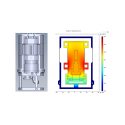
Task 4. Cryogen-free cryostat with sample changer for fast automatic data collection
TUM (task leader*) – STFC, ILL (partners) – HZB, JÜLICH, CEA, ANSTO (Australia), ORNL (USA), JAEA (Japan) (observers).
In order to decrease dead times related to temperature and sample changes during neutron scattering experiments in cryostats (many soft materials studies are carried out in cryostats), it is necessary to design and build a cryostat that features a carousel of samples either placed at room temperature or thermalised at low temperature (for example at 80K by using a cold gas stream), equipped with an automatic sample changer, and capable to extend the available temperature range (down to 3 K or lower and up well above room temperature).
A more compact design with less cold mass would allow rapid cool-down and sample changes by means of a robot.
We propose to design and draw a new cryostat with a sample changer fulfilling these specifications. The body of the cryostat will be modular so as to allow the mounting of a tail optimised for SANS, Reflectometry, and other neutron instruments from different facilities. Tail windows will be designed in order to apply in-situ light/UV or other external radiation.
[*change during the NMI3 General assembly meeting in 2012]
